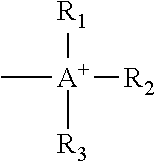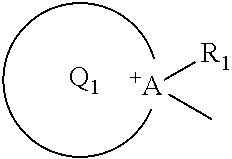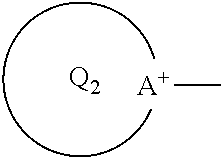Electrode for secondary battery, slurry for secondary battery electrode, and secondary battery
a secondary battery and electrode technology, applied in the direction of non-metal conductors, cell components, conductors, etc., can solve the problems of stable operation over a wider temperature range, method cannot suppress deposition of lithium metal, and significant decrease in discharge capacity, so as to improve discharge characteristics, not suppress deposition of lithium metal, and improve the mobility of lithium ions
- Summary
- Abstract
- Description
- Claims
- Application Information
AI Technical Summary
Benefits of technology
Problems solved by technology
Method used
Image
Examples
example 1
Production of Slurry for Electrode
[0217]“DAICEL 2200” available from DAI-ICHI KOGYO SEIYAKU CO., LTD., was used as carboxymethyl cellulose (CMC) to prepare a 1.0% CMC aqueous solution.
[0218]In a planetary mixer equipped with a disper, 100 parts of artificial graphite having a mean particle diameter of 24.5 μm as an electrode active material, 0.1 parts (based on a solid content) of the polymer A as a polymer having a cationic group, and 0.9 parts of 1% CMC aqueous solution were placed, and the solid content concentration was prepared to 53.5% with ion exchanged water. Then the mixture was stirred at 25° C. for 60 minutes. Then ion exchanged water was added to prepare a solution having a solid content concentration of 44%, and then the mixture were further stirred at 25° C. for 15 minutes.
[0219]To the mixture, 1.0 part (based on the solid content) of the aqueous dispersion liquid of particulate polymer 1 having a solid content concentration of 40% as a particulate polymer was added. F...
example 2
[0225]A slurry for an electrode and a negative electrode half-cell were produced in the same manner as in Example 1 except for using the particulate polymer 2 in place of the particulate polymer 1. The performance of the battery was evaluated. The results are shown in Table 2.
example 3
[0226]A slurry for an electrode and a negative electrode half-cell were produced in the same manner as in Example 2 except for using the polymer B in place of the polymer A. The performance of the battery was evaluated. The results are shown in Table 2.
PUM
 Login to View More
Login to View More Abstract
Description
Claims
Application Information
 Login to View More
Login to View More - R&D
- Intellectual Property
- Life Sciences
- Materials
- Tech Scout
- Unparalleled Data Quality
- Higher Quality Content
- 60% Fewer Hallucinations
Browse by: Latest US Patents, China's latest patents, Technical Efficacy Thesaurus, Application Domain, Technology Topic, Popular Technical Reports.
© 2025 PatSnap. All rights reserved.Legal|Privacy policy|Modern Slavery Act Transparency Statement|Sitemap|About US| Contact US: help@patsnap.com



